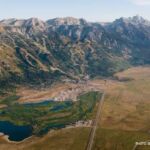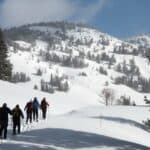Read The
Current Issue
GTNP’s Historic Ranches
The storied dude ranches that helped introduce the West to generations of visitors left an enduring legacy on Grand Teton National Park—one that can still be experienced today.
// By Helen Olsson
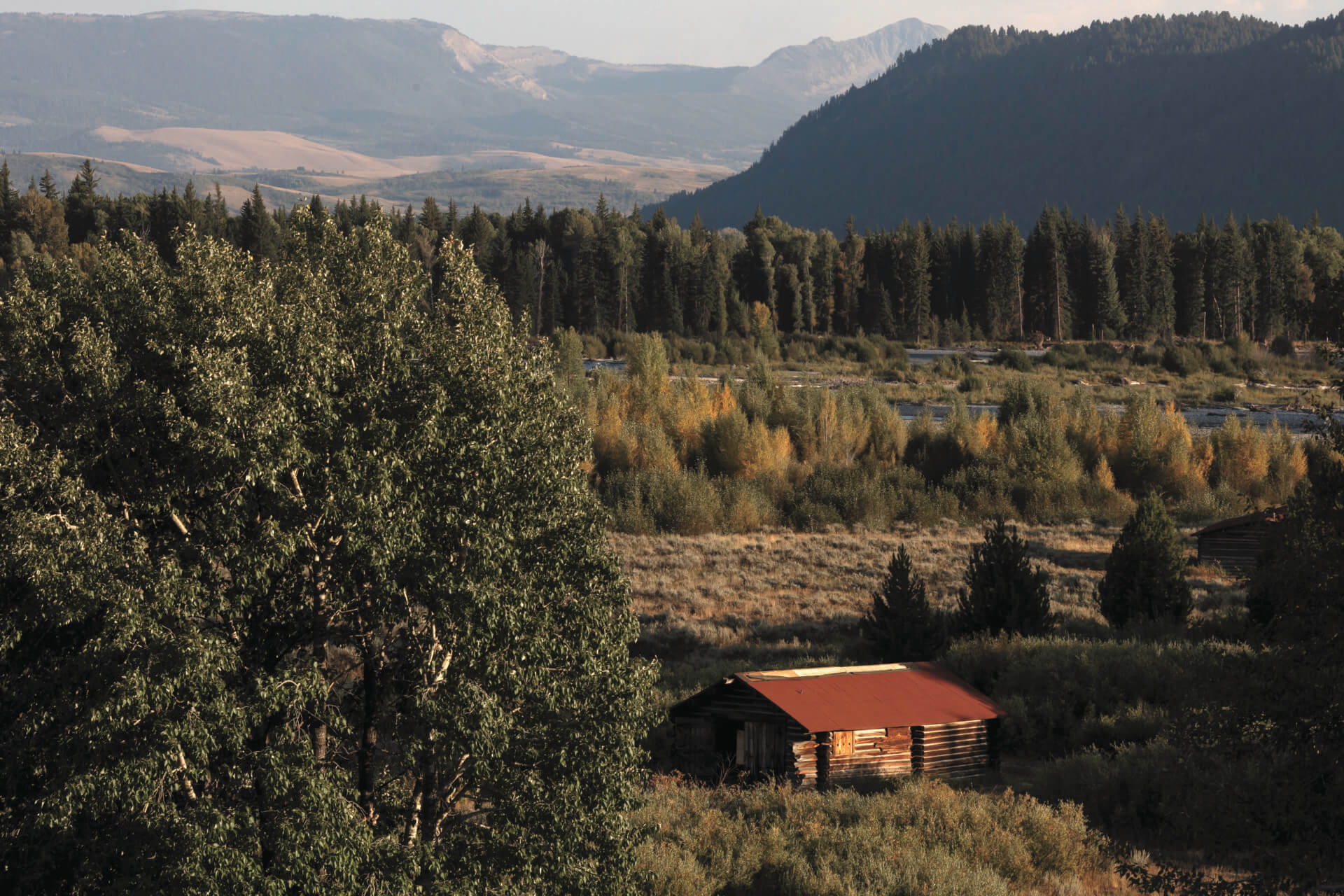
From the early 1900s to the 1940s, Jackson Hole was a hotbed for dude ranching. City slickers came to experience the Western landscape, rustic cabins, and the cowboy lifestyle, saddling up for overnight pack trips into the wilderness. The social scene was vibrant, too, with cocktail hours, dances, card games, and dinners. “You’d take a train to Victor, Idaho, then a stagecoach over Teton Pass, and then get picked up in town by your dude ranch, which would bring you to the ranch in a wagon,” says Katherine Wonson, former director of the Western Center for Historic Preservation, an arm of the National Park Service that does preservation projects on NPS lands throughout the Western United States, including Grand Teton National Park. “With that time commitment for travel, guests stayed a minimum of a month—most stayed for the whole summer.”
In the 1920s, Grand Teton National Park hadn’t yet been founded, and dude ranching was the valley’s largest employer, with the White Grass, Bar BC, and JY Ranches, all at the foot of the Tetons, leading the way. After World War II—and the rise of personal automobiles—many of the ranches closed; many of those that were within GTNP were purchased by John D. Rockefeller’s Snake River Land Company and then donated to the park. In 1990, over 70 percent of the original ranch buildings acquired by GTNP had been demolished or removed. “Back in the 1980s, the park saw itself as a ‘natural park,’” Wonson says. “These buildings were considered a blight on the landscape.” It wasn’t until the 2000s that historic preservation became a priority. Today, you can visit old dude ranch sites within GTNP—some still dotted with historic structures, others reclaimed by nature.
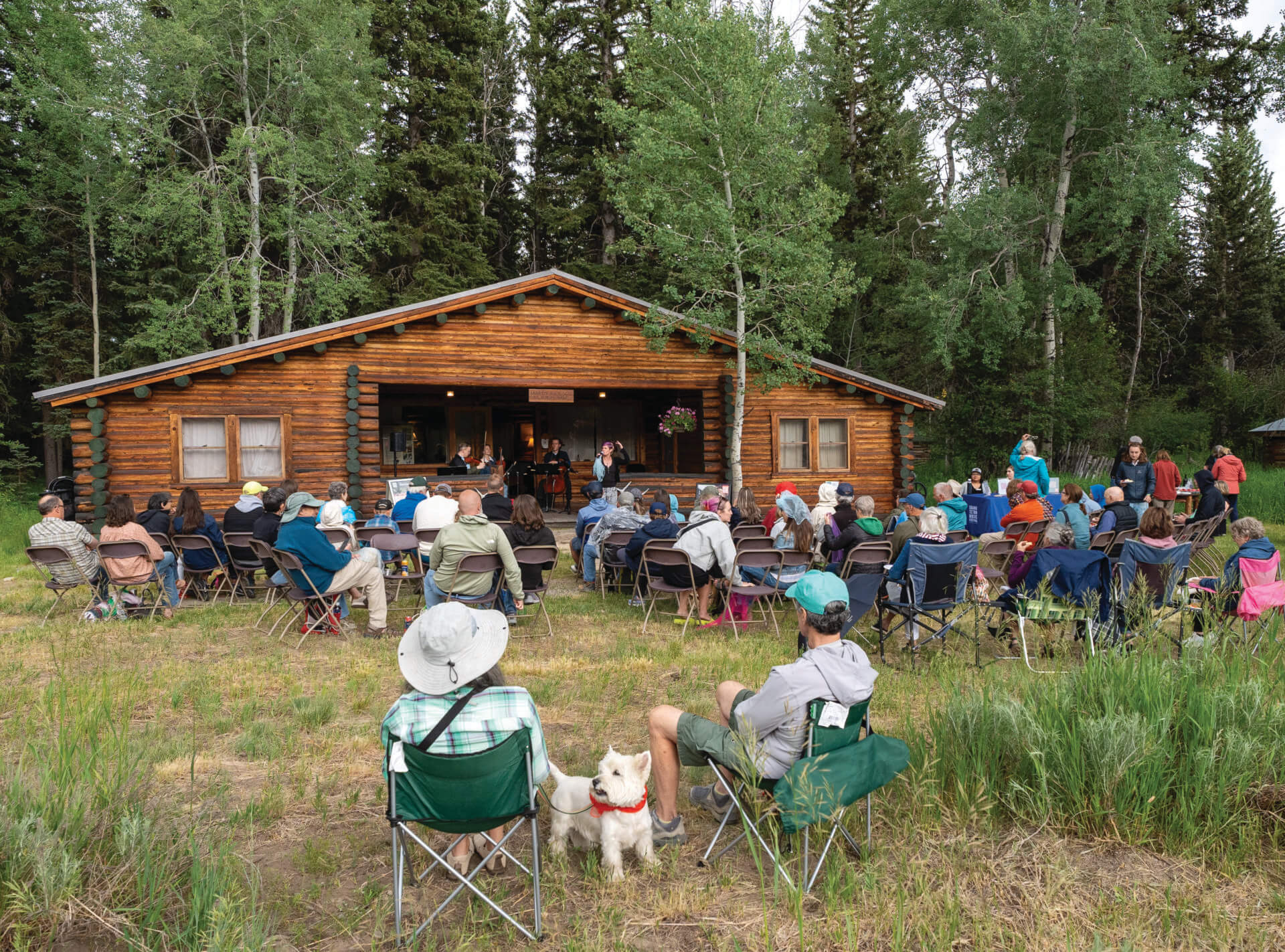
Murie Ranch
History: In 1927, biologist Olaus Murie came to Jackson to study the elk herd with the Biological Survey. Olaus and his wife, Margaret—along with his brother Adolph and his wife, Louise—bought the STS Dude Ranch in 1945. Their first order of business was to remove fences so wildlife could roam freely. The ranch soon became a hub for wilderness conservation advocacy. The Muries’ conservation work helped pass the 1964 Wilderness Act and establish the Jackson Hole National Monument, which became Grand Teton National Park, in 1943. Olaus was the director of The Wilderness Society, and the couple hosted front porch chats about preserving the environment. The Murie Residence was listed in the National Register of Historic Places in 1990, Murie Ranch in 1998. The properties were declared a National Historic Landmark in 2006.
Memorable Character: In 1924, Margaret “Mardy” Murie became the first woman to graduate from the University of Alaska. “After Olaus passed, she continued the conservation legacy,” Wonson says. “She was pretty much responsible for the passing of the Alaska National Interest Lands Conservation Act (ANILCA).” For her decades of conservation work, she received the Audubon Medal in 1980, and in 1998, President Bill Clinton awarded her the Presidential Medal of Freedom.
Today: The ranch boasts 17 original cabins including the Muries’ homestead. Teton Science Schools is continuing the Muries’ legacy with its free Front Porch Concerts and Conversations held throughout the summer. The program hosts experts, activists, and archivists to discuss nature and conservation, and it also brings in folk music and acoustic acts.
Getting There: Before the Moose entrance station, turn left into the Craig Thomas Discovery and Visitor Center parking lot. From there, it’s a short walk to Murie Ranch.
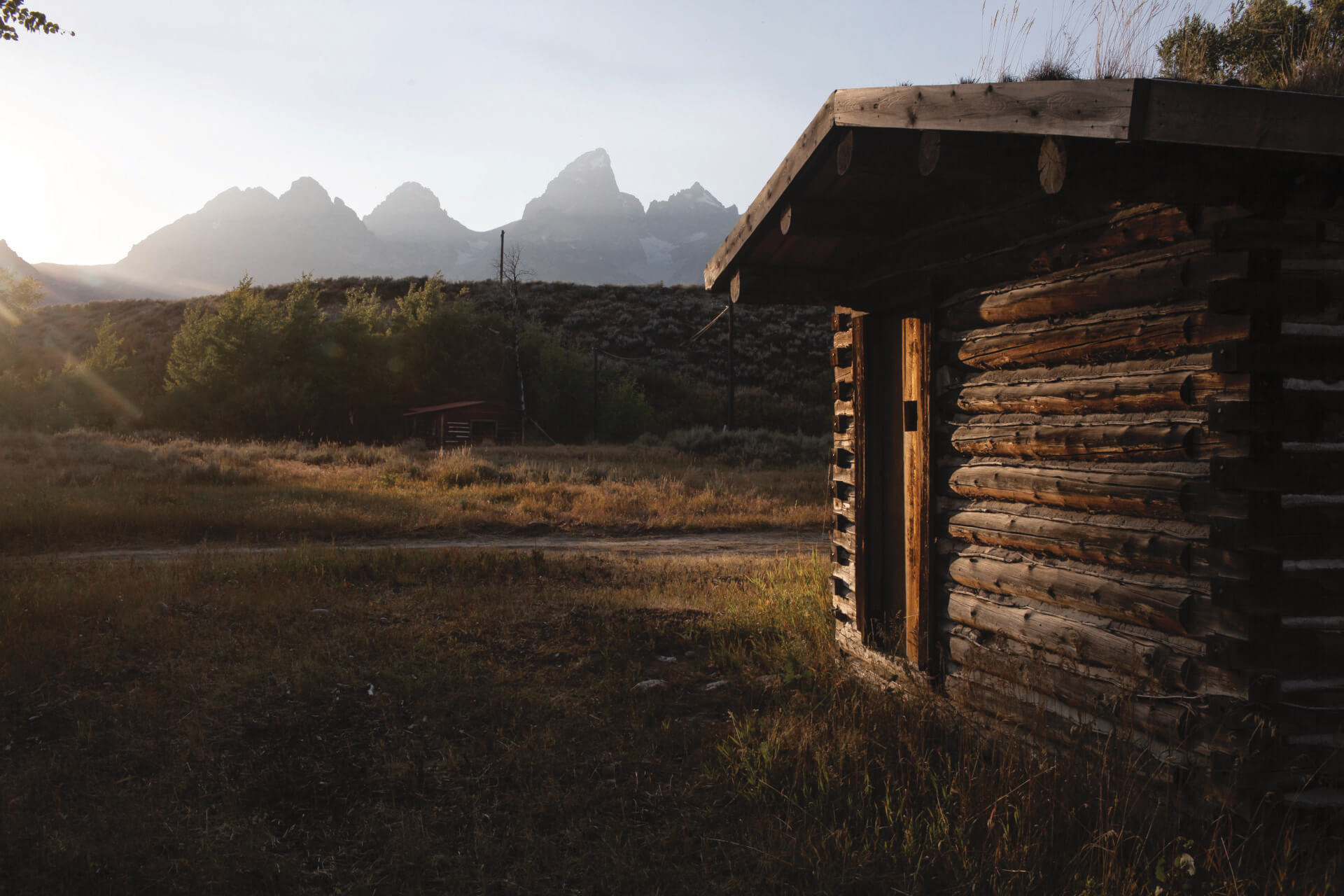
Bar BC Ranch
History: After a falling out with Louis Joy, Struthers Burt partnered with Horace Carncross to open Jackson Hole’s second dude ranch in 1912: the Bar BC Ranch. It once had 32 cabins, a swimming hole with diving board, and an electrical plant powered by irrigation flumes. In its heyday, as many as 50 guests stayed at the ranch, paying $300 for a monthlong cowboy adventure. The Bar BC catered to a high-end clientele, with costume parties, plays, and literary discussions. In 1929, Burt sold the Bar BC to Rockefeller’s Snake River Land Company, though Burt and his new partner, Irving Corse, retained a life lease to continue dude ranching operations. When the last of the Corse family passed away, the Bar BC reverted to GTNP. In 1990, it was added to the National Register of Historic Places.
Memorable Characters: Struthers Burt was a well-known author who penned The Diary of a Dude-Wrangler (1924). His wife, Katharine Newlin Burt, was a prolific author whose novels and stories were often adapted for the silver screen, including the 1921 silent film Snowblind. The duo attracted literary icons like Ernest Hemingway and William Faulkner, who came to the Bar BC with their typewriters. “With their literary celebrity, the Burts really put the Bar BC on the map,” Wonson says.
Today: Many of the ranch’s cabins remain along the western bank of the Snake River in various stages of disrepair. The main cabin was rehabilitated by the Western Center for Historic Preservation. The ranch had its own airstrip, and remnants of an airplane hangar can still be seen. Visitors can spend the day here fishing, hiking, and picnicking, or biking.
Getting There: Drive through the Moose entrance station, turn right, and head east on River Road for two miles (4-wheel drive only). Park at the small lot near the gate.

White Grass Ranch
History: In the early 1900s, two homesteaders with adjacent properties—Harold Hammond and George Tucker Bisham—discovered that tourism was more lucrative than cattle ranching. In 1919, they opened White Grass, the valley’s third dude ranch. Though it struggled to stay open during the one-two punch of the Great Depression and World War II, White Grass survived through Western grit and ingenuity. They dug ditches near guest cabins to chill drinks in mountain runoff and built silver fox pens during the Great Depression to sell pelts for additional revenue. White Grass shuttered in 1985, and in 1990, the 320-acre ranch was listed on the National Register of Historic Places. In 2005, the NPS, partnering with the National Trust for Historic Preservation, began rehabilitating the ranch’s dilapidated structures.
Memorable character: Frank Galey, Hammond’s stepson, who dropped out of Princeton to run the ranch upon Hammond’s death, was legendary. Galey once used dynamite to blast snow off the barn’s original gambrel roof. “The barn was sold at auction in the late 1980s for $1 and hauled down to Rock Springs,” Wonson says.
Today: From 2007 to 2024, White Grass was used as an NPS training facility for teaching historic preservation techniques. Today, 13 structures have been fully rehabilitated, including guest cabins, a bathhouse, and a main cabin with a dining hall, card room, and library. In October 2024, GTNP took the property back for short-term housing for youth crews and volunteers, ending nearly two decades of use as a preservation facility. Visitors to White Grass can hike to Phelps Lake or do an out-and-back in Death Canyon.
Getting There: There’s ongoing road construction in this area this summer, so check with the GTNP visitor center in Moose to learn the best way to White Grass Ranch.
Though White Grass Ranch struggled to stay open during the one-two punch of the Great Depression and World War II, it survived through Western grit and ingenuity.
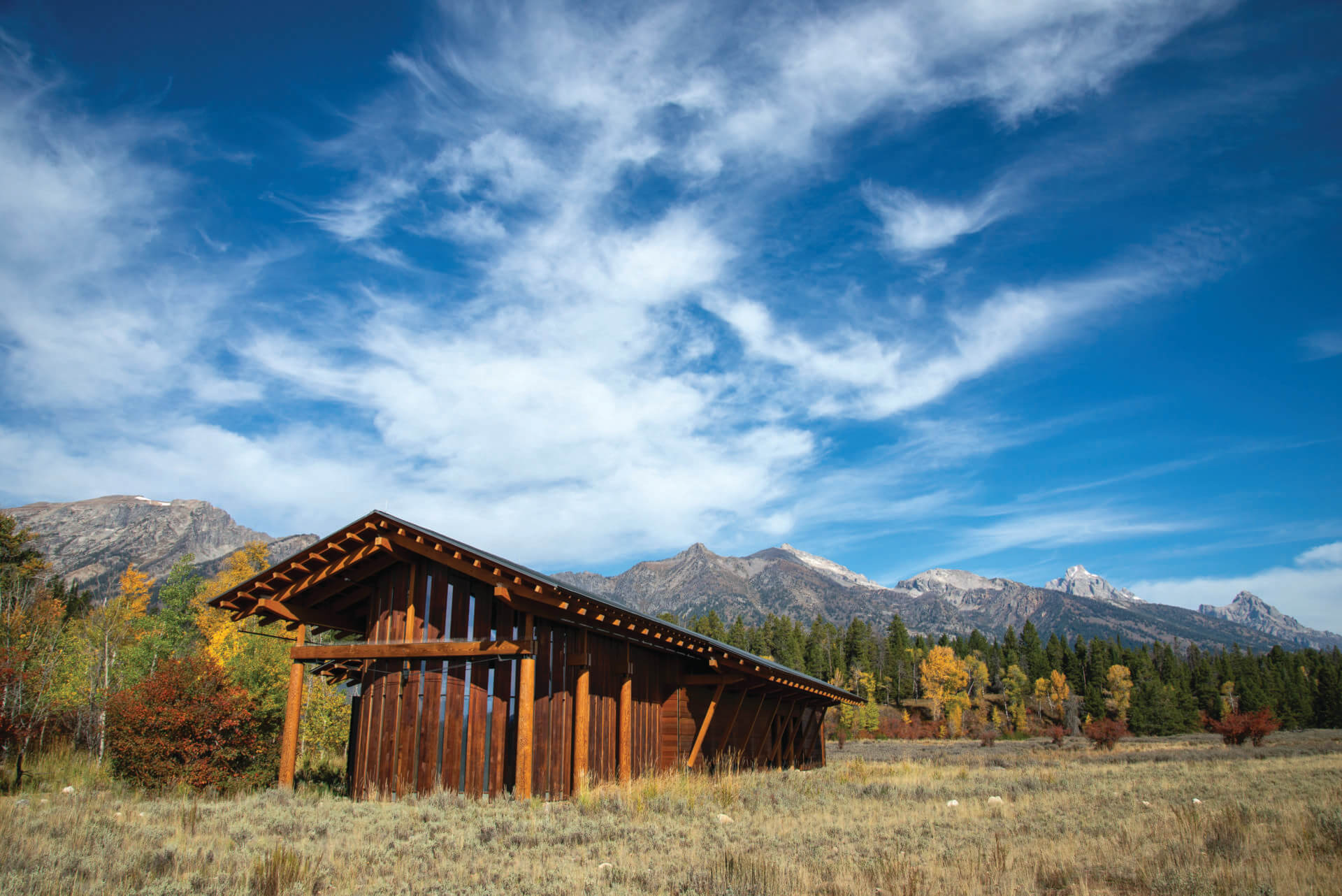
Laurance S. Rockefeller Preserve (formerly JY Ranch)
History:Founded by Louis Joy and Struthers Burt on a 1903 homestead, JY Ranch was Jackson Hole’s first dude ranch. In 1908, the operation’s inaugural year, it housed six guests (or “dudes”). By 1927, the thousand-acre cattle ranch on Phelps Lake bustled with 65 guests who came for an authentic Western experience. Starting in the late 1920s, John D. Rockefeller, intent on purchasing land for conservation, bought 35,000 acres, and in 1932, he bought the JY Ranch. The property was used as a Rockefeller family retreat for nearly seven decades and eventually gifted over time to GTNP. By 2007, Laurance S. Rockefeller (John’s son) had transferred the last acres of the JY Ranch to the park. It’s now called LSR Preserve in his honor.
Memorable character: At a time when many considered dilapidated ranch structures as nuisances, Laurance saw the value in historic preservation. He helped ensure many of the original JY structures were saved. Some were moved to the Rockefellers’ Granite Ranch; others were relocated throughout the park. The former JY log cabin shop was cut into pieces and moved to Moose, where it serves as the Western Center for Historic Preservation’s carpentry shop.
Today: What’s left is a land returned to its natural habitat. The LSR Preserve Center features sensory exhibits on plants and wildlife and ranger-led talks and walks. The Preserve features 10 miles of trails, including a hike to Phelps Lake.
Getting There: Just before the Moose entrance station, turn left on the Moose-Wilson Road. The LSR Preserve’s 50-car lot is four miles up the road on the left.
The JY Ranch was used as a Rockefeller family retreat for nearly seven decades and eventually gifted to GTNP; today it is the Laurance S. Rockefeller Preserve.
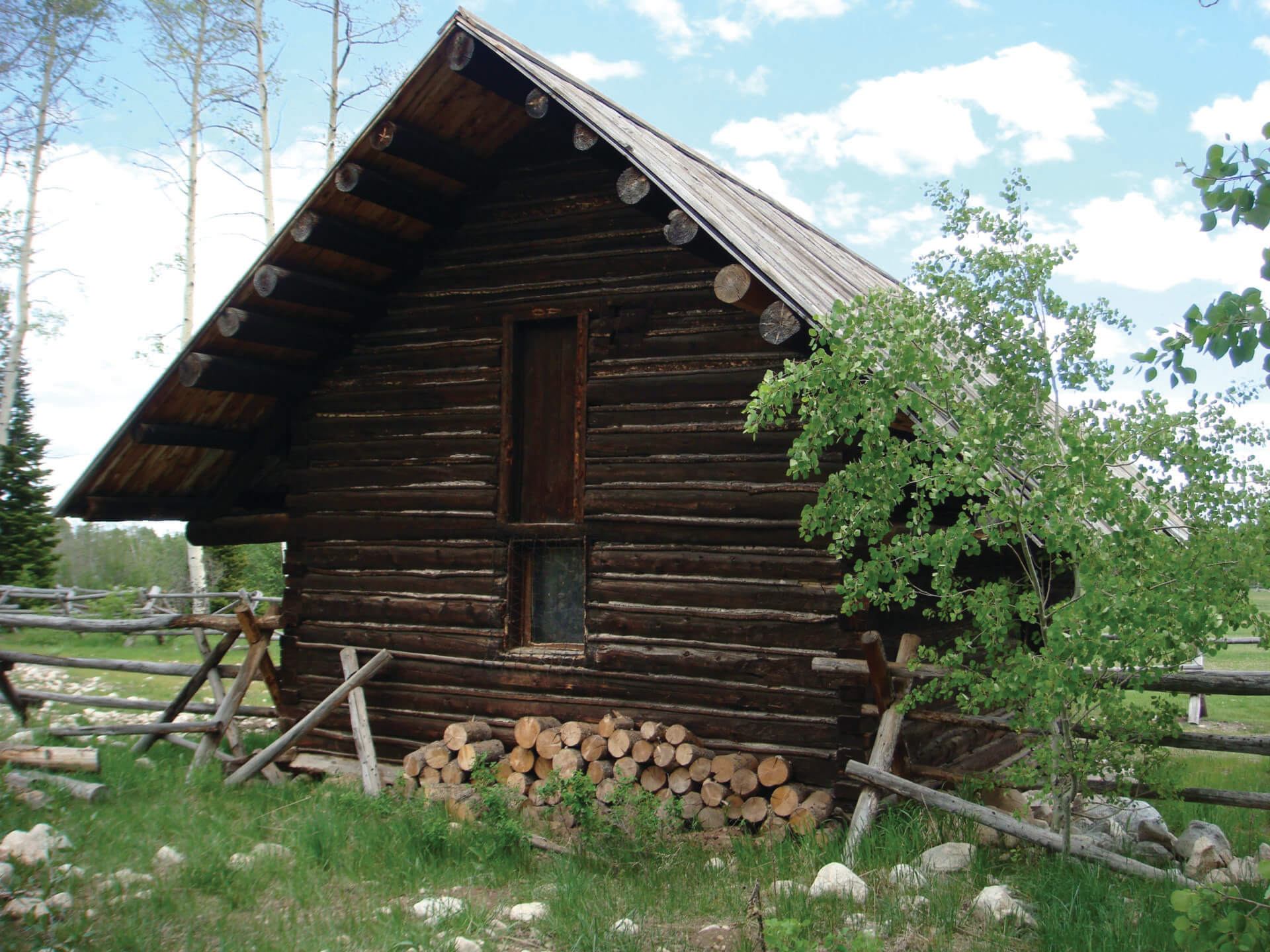
Elbo Ranch
History: Charles “Chester” Goss opened Elbo Ranch in 1926. Unlike the existing dude ranches that catered to monthlong visits, Elbo attracted tourists arriving in cars for shorter stays. It had rodeo grounds, a racetrack, grandstands, and concessions stands. A billboard proclaimed it “Home of the Hollywood cowboy!” Set beneath the Tetons, it was considered an eyesore that threatened to spoil the natural surroundings. To preserve the land for future park expansion, John D. Rockefeller’s Snake River Land Company bought the Elbo Ranch in 1929. In the ensuing years, different dude ranches operated on the land—at a much smaller scale than Goss’s endeavor. In 1958 the Elbo Ranch name and brand moved to land just outside GTNP. This relocated ranch is sometimes called “the second Elbo Ranch” and now serves as a campus for the Teton Science Schools.
Memorable Character: Some of the land occupied by Goss’s Elbo Ranch was homesteaded by James “Jimmy” Manges in 1911. Manges grew barley, hay, and wheat, but cultivation was tough going, so he was happy to sell it to Goss after more than a decade of scratching out a living.
Today: The original Elbo Ranch cabins have been torn down or relocated. However, the Manges cabin, believed to be the first two-story log structure in the valley, still sits on the land. It was listed on the National Register of Historic Places in 1998. Hints of the racetrack can be seen in the sagebrush with satellite imagery.
Getting There: To see the cabin from the pasture, enter the park via the Moose entrance and then park at the Cottonwood Creek picnic area north of Taggart Lake Trailhead. You can also see it by hiking the Taggart Lake Loop Trail. JH

